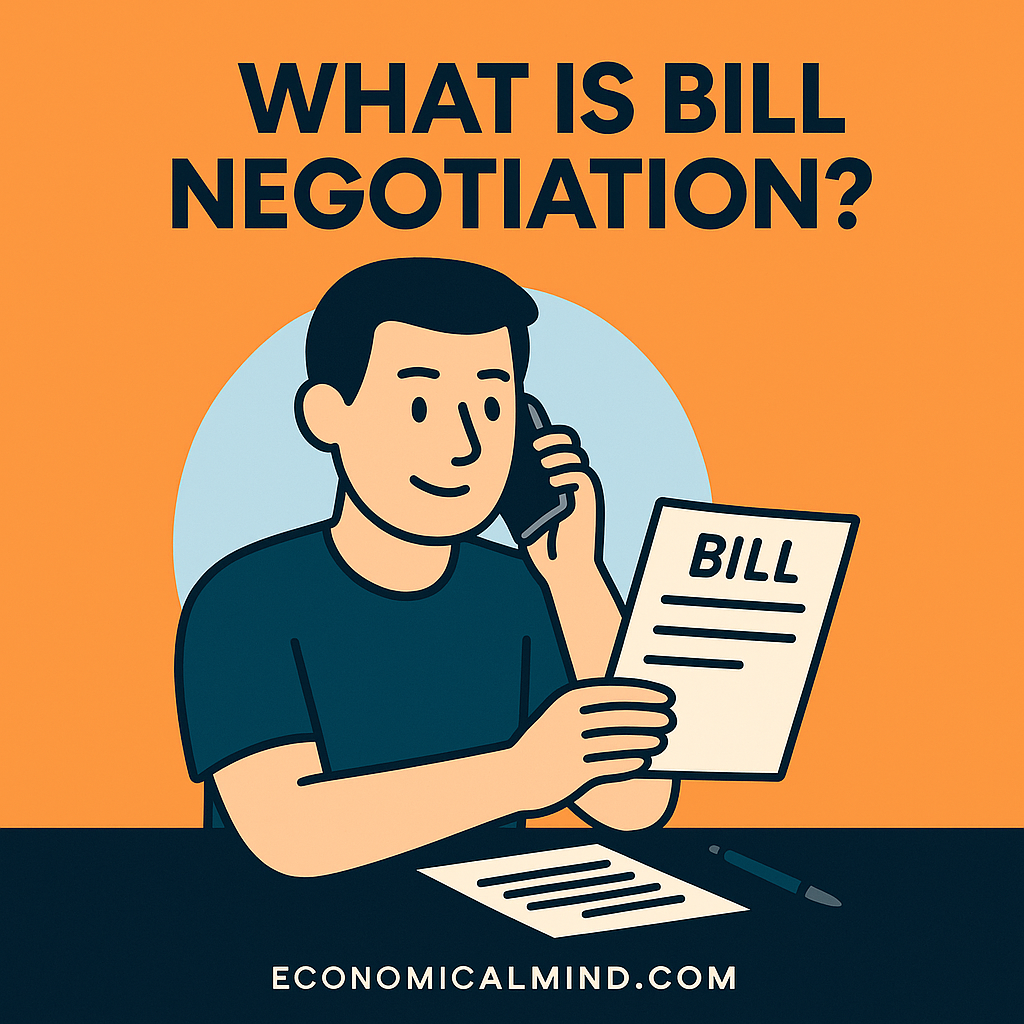
Most people don’t realize how much money slips away every month through overpriced bills — from internet and insurance to streaming subscriptions. Bill negotiation is the process of lowering what you pay for these recurring expenses without changing your services. It’s one of the easiest ways to boost your budget without cutting your lifestyle.
How Bill Negotiation Works
Bill negotiation involves contacting service providers and asking for better rates, discounts, or promotions. Some people do this themselves, while others use professional negotiation services that take a small percentage of the savings they secure for you.
Example: If you call your cable provider and say you’re considering switching to a competitor, they may offer a lower rate or temporary discount to keep your business.
Common Bills You Can Negotiate
- Internet and cable
- Cell phone plans
- Insurance premiums (auto, renters, or home)
- Credit card interest rates or annual fees
- Subscription services (music, streaming, software)
- Gym memberships
Almost any recurring bill has wiggle room — especially if you’ve been a long-term, reliable customer.
Pros of Bill Negotiation
1. Instant Savings
You can often save hundreds per year with a single call.
Example: Negotiating a $20 monthly discount equals $240 in annual savings.
2. No Lifestyle Sacrifice
You keep the same services — just pay less for them.
Example: Same internet speed, lower bill.
3. Helps Identify Unused Subscriptions
The negotiation process forces you to review your expenses.
Example: You may find subscriptions you forgot to cancel.
4. Improves Financial Awareness
Learning where your money goes helps build better budgeting habits.
5. Can Be Outsourced
Apps and companies like BillCutterz or Truebill can handle negotiations for you.
Cons of Bill Negotiation
1. Time and Effort
Negotiating takes patience — waiting on hold and explaining your case.
Fix: Block out 30–60 minutes per bill or use an automated service.
2. Temporary Discounts
Some deals expire after 6–12 months.
Fix: Set reminders to renegotiate before rates go back up.
3. Not Every Provider Will Budge
Some companies have strict policies or no flexibility.
Fix: Always ask politely, and if they can’t lower the price, ask for loyalty credits or free add-ons.
4. Limited Results on Fixed Costs
Utilities like electricity or water usually have less room for negotiation.
Fix: Focus on services with competition — internet, insurance, or cell plans.
Best Practices for Bill Negotiation
1. Review All Recurring Expenses
Start by listing every monthly bill and identifying which ones may be negotiable.
2. Research Competitor Rates
Having quotes or competitor prices strengthens your leverage.
3. Use the Right Tone
Be polite, professional, and confident — you’re not demanding, you’re exploring options.
4. Mention Loyalty or Long-Term Use
Companies are more likely to reward reliable customers.
5. Keep Notes
Document who you spoke with, what they offered, and when the new rate takes effect.
6. Set Calendar Reminders
Revisit negotiated bills once or twice a year to make sure rates stay low.
7. Automate Where Possible
Use negotiation apps or financial management tools to save time.
Key Takeaway
Bill negotiation is one of the simplest ways to save money without giving up the things you enjoy. A few polite phone calls (or a good negotiation app) can help you keep more of your income every single month.
